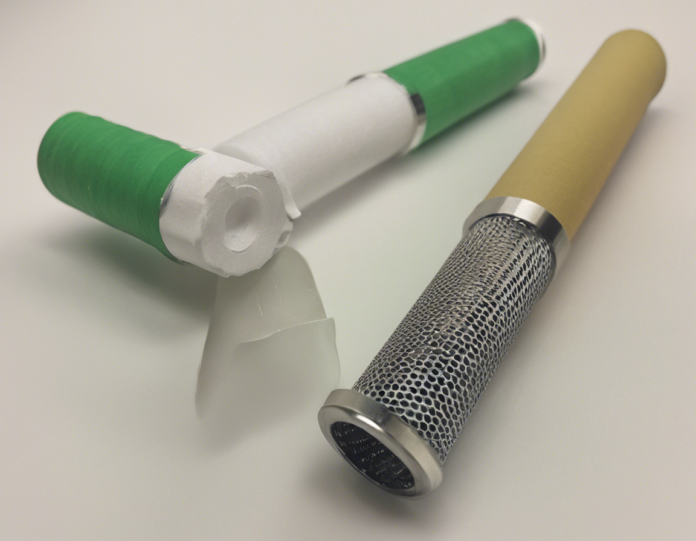Introduction
Water is one of the most vital resources for life on Earth, and ensuring its quality is crucial for the well-being of both humans and the environment. Water pollution is a significant issue, with contaminants ranging from industrial waste to agricultural runoff infiltrating our water sources. In response to this challenge, the use of joint filters has emerged as a valuable solution for enhancing water quality. In this comprehensive guide, we will delve into the benefits of joint filters, how they work, and their applications in various settings.
Understanding Joint Filters
Joint filters play a critical role in water treatment and purification processes. These filters are designed to remove impurities, particles, and sediments from water, resulting in cleaner and safer drinking water. The primary function of a joint filter is to trap and retain contaminants while allowing clean water to pass through.
Key Components of Joint Filters
-
Filter Media: The filter media is the material inside the joint filter that captures contaminants. Common types of filter media include sand, carbon, anthracite, and multimedia layers.
-
Filter Housing: The filter housing holds the filter media in place and directs the flow of water through the filter. It is typically made of durable materials such as stainless steel or plastic.
-
Control Valve: The control valve regulates the flow of water through the filter and allows for backwashing to clean the filter media.
How Joint Filters Work
When water passes through a joint filter, the filter media traps contaminants based on their size and properties. Larger particles are captured near the surface of the filter media, while smaller particles may penetrate deeper into the media. As the filter captures more particles over time, its efficiency decreases, leading to a reduction in water flow and quality.
Applications of Joint Filters
-
Residential Water Filtration: Joint filters are commonly used in homes to improve the taste and quality of drinking water. They can remove sediments, chlorine, and other impurities, providing clean and healthy water for daily use.
-
Industrial Water Treatment: Industries rely on joint filters to remove pollutants and contaminants from their wastewater. By using joint filters, industrial facilities can meet regulatory standards and minimize their environmental impact.
-
Agricultural Irrigation: Joint filters are essential in agricultural irrigation systems to prevent clogging of pipes and emitters. By removing sediment and debris from the water, joint filters ensure efficient water distribution to crops.
-
Municipal Water Treatment: Municipalities use joint filters in water treatment plants to purify drinking water for residents. These filters play a vital role in removing suspended solids, organic matter, and harmful pathogens from the water supply.
Benefits of Using Joint Filters
-
Improved Water Quality: Joint filters effectively remove impurities and contaminants from water, resulting in cleaner and safer drinking water.
-
Extended Equipment Life: By preventing sediment buildup and corrosion, joint filters help prolong the lifespan of water treatment equipment and infrastructure.
-
Cost Savings: Investing in joint filters can lead to long-term cost savings by reducing maintenance expenses and minimizing downtime due to equipment failures.
-
Environmental Protection: By filtering out pollutants and harmful substances, joint filters help protect the environment and aquatic ecosystems from contamination.
Selecting the Right Joint Filter
-
Flow Rate: Consider the flow rate of water in your system to ensure that the joint filter can handle the required volume without compromising efficiency.
-
Filter Media: Choose the appropriate filter media based on the contaminants you need to remove from the water. Different types of filter media are designed to target specific impurities.
-
Maintenance Requirements: Evaluate the maintenance needs of the joint filter, including backwashing frequency and media replacement, to ensure optimal performance over time.
-
Compatibility: Ensure that the joint filter is compatible with your existing water treatment system and meets the necessary standards and regulations.
FAQs about Joint Filters
- What are the common contaminants that joint filters can remove?
Joint filters can effectively remove sediment, sand, chlorine, organic matter, and various other impurities from water.
- How often should a joint filter be backwashed?
The frequency of backwashing depends on the level of contamination and water flow rate but typically ranges from once a week to once a month.
- Can joint filters be used in well water systems?
Yes, joint filters are suitable for well water systems to improve water quality by removing sediment, iron, and other contaminants.
- Do joint filters require professional installation?
While professional installation is recommended for optimal performance, some joint filters are designed for easy DIY installation.
- Are joint filters sustainable and eco-friendly?
Yes, joint filters contribute to sustainability by reducing the use of single-use plastic bottles and minimizing the discharge of pollutants into the environment.
Conclusion
Joint filters are essential tools for enhancing water quality in various settings, from residential to industrial applications. By removing impurities and contaminants from water, joint filters not only ensure access to clean and safe drinking water but also contribute to environmental protection and sustainability. Understanding the key components, working principles, and applications of joint filters is crucial for selecting the right filter for your specific needs. Whether you are looking to improve the quality of your drinking water at home or enhance the efficiency of your industrial water treatment processes, joint filters offer a reliable solution for cleaner and healthier water resources.


Recent comments